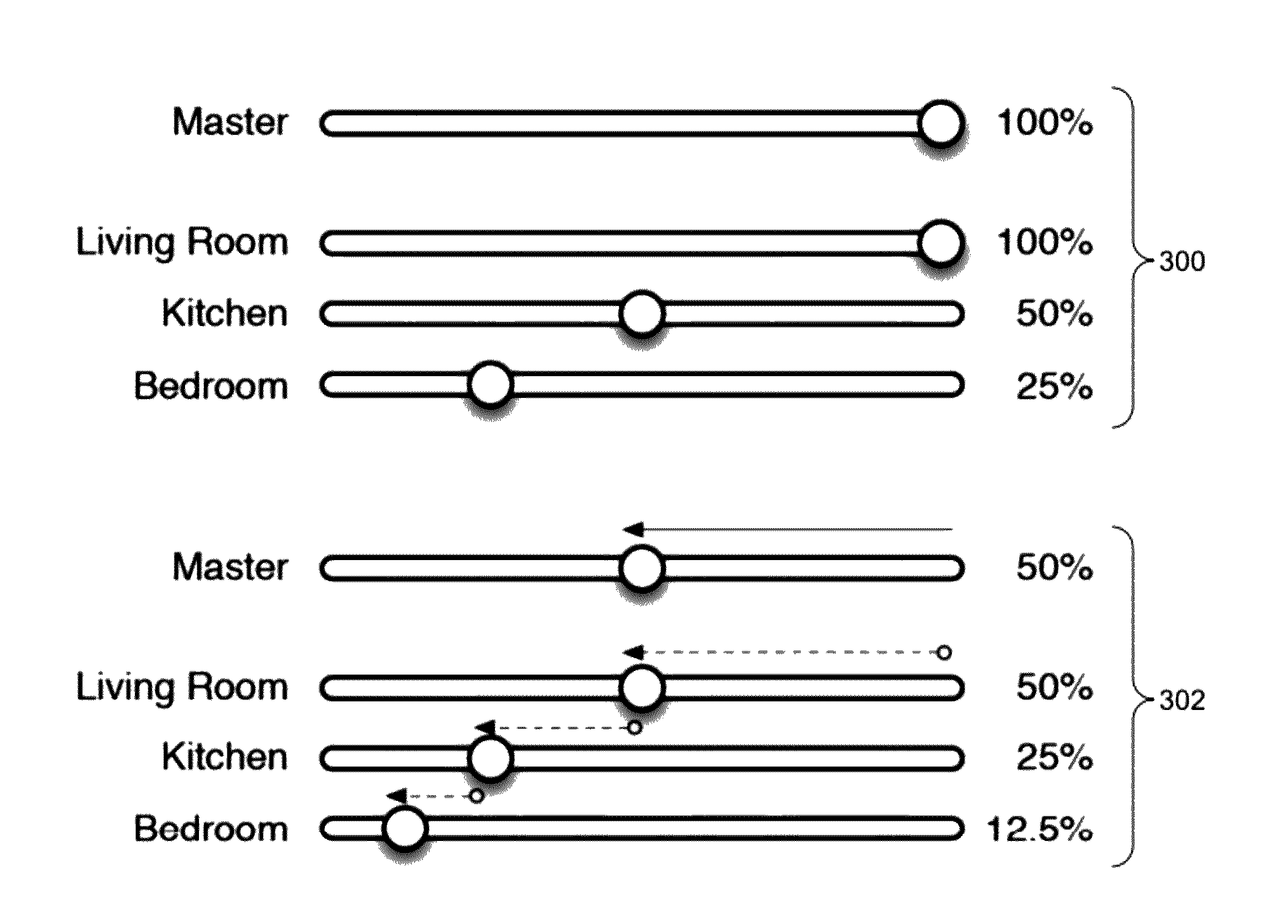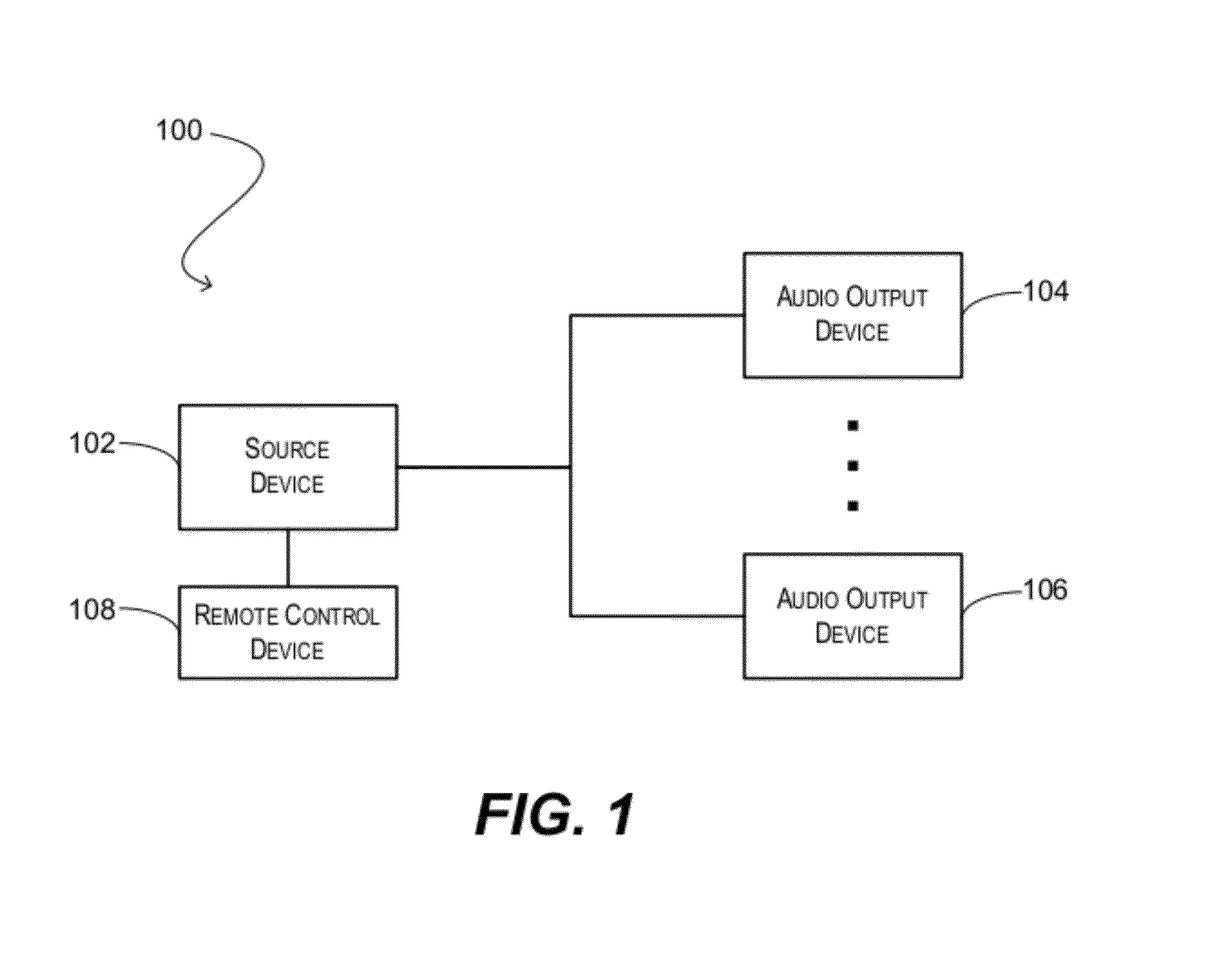Dynamic adjustment of master and individual volume controls
a volume control and master technology, applied in the field of audio systems, can solve the problems of the cost of a global volume control, the inability to control the volume of a single audio output device, etc., and achieve the effect of easily and accurately detecting the current “loudness” of each audio output devi
- Summary
- Abstract
- Description
- Claims
- Application Information
AI Technical Summary
Benefits of technology
Problems solved by technology
Method used
Image
Examples
Embodiment Construction
[0016]In the following description, for the purposes of explanation, numerous details are set forth in order to provide an understanding of various embodiments of the present invention. It will be apparent, however, to one skilled in the art that certain embodiments can be practiced without some of these details.
[0017]Embodiments of the present invention provide techniques for controlling the volumes of multiple audio output devices using a collective (master) volume control and an individual volume control for each audio output device. In one set of embodiments, each individual volume control can be configured to indicate the current absolute volume level of its corresponding audio output device. When the master volume control is manually adjusted, the individual volume controls can be automatically adjusted in a manner proportional to the manual adjustment of the master volume control. Thus, the master volume control can globally modify the volumes of multiple audio output devices...
PUM
 Login to View More
Login to View More Abstract
Description
Claims
Application Information
 Login to View More
Login to View More - R&D
- Intellectual Property
- Life Sciences
- Materials
- Tech Scout
- Unparalleled Data Quality
- Higher Quality Content
- 60% Fewer Hallucinations
Browse by: Latest US Patents, China's latest patents, Technical Efficacy Thesaurus, Application Domain, Technology Topic, Popular Technical Reports.
© 2025 PatSnap. All rights reserved.Legal|Privacy policy|Modern Slavery Act Transparency Statement|Sitemap|About US| Contact US: help@patsnap.com



